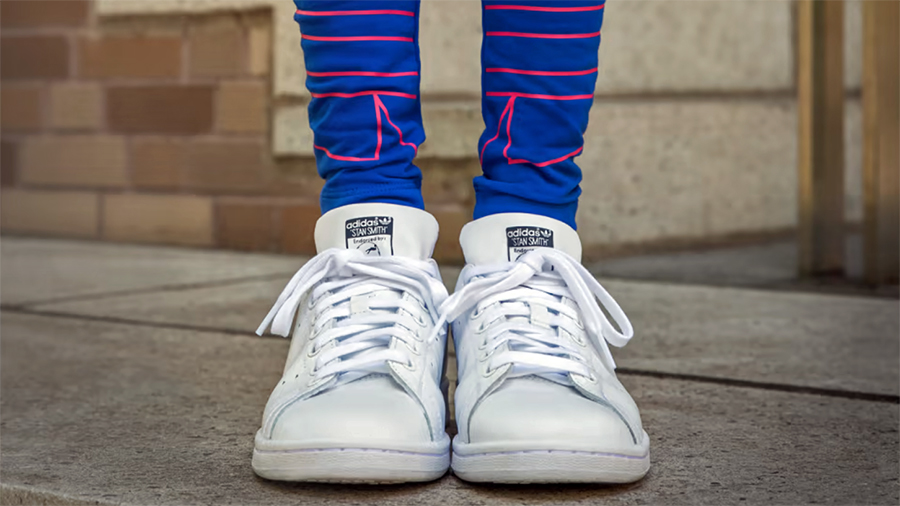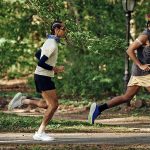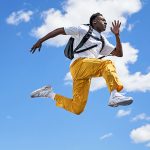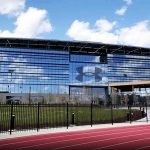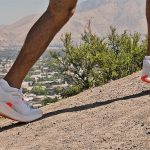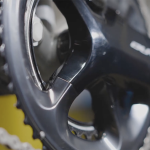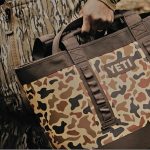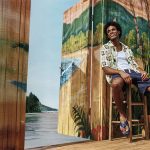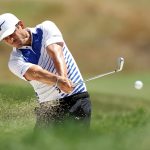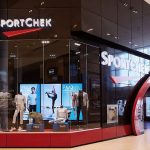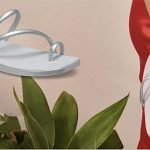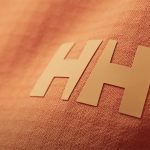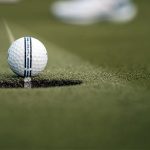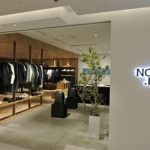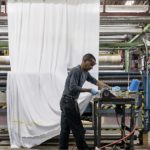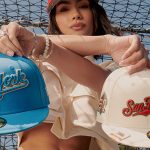Footwear delivered a healthy performance generally across the specialty, family footwear, and sporting goods space, with many helped by strength in athletic brands and a solid start to back-to-school selling, according to an analysis of publicly-held retailers. The period was marked by “inflection points” reached by Foot Locker and the Journeys chain, continued strong rollout of the JD banner in the U.S. for JD Sports, and sequential improvement at Famous Footwear, Shoe Carnival and DSW.
Foot Locker, Inc. reported comparable sales grew 2.6 percent in the second quarter, surpassing initial projections and marking the first increase in six quarters. Foot Locker President and CEO Mary Dillon said the company’s Lace Up Plan improvement plan is driving a “meaningful inflection point.”
“We’re approaching the back half of the year with confidence,” Dillon said on an analyst call. “The impact of our Lace Up Plan is accelerating. The Lace Up Plan is working, as evidenced by our return to positive total and comparable sales growth as well as gross margin expansion in the second quarter. We’re really pleased to be returning to positive comps as we’re pulling back on promotions. Our execution is getting better in meeting customers’ needs.”
Dillon said its employee training, focused on omni-channel selling behavior and product education tools, has increased store-level conversion. She also noted that the comp trend strengthened through the quarter, with July as the retailer’s strongest month, was marked by a “solid start” to the back-to-school season, especially in-store, and that strength continued into August.
Foot Locker’s comparable sales increase, led by global Foot Locker and Kids Foot Locker, was 5.2 percent. Dillon said, “We were also particularly pleased to see stabilization in the Champs Sports banner, as the banner achieved meaningful comp improvement quarter-over-quarter as its repositioning continues to take root.”
Foot Locker’s digital transformation is also gaining momentum, with digital sales penetration rising to 15.9 percent. The relaunch of the FLX Rewards program in June has seen promising results, contributing to a 24 percent increase in sales through loyalty channels in Q2. Dillon aims for a 50 percent loyalty penetration by 2026.
By product category, footwear comped positive high-single-digits in the second quarter while apparel’s challenges continued, down in the mid-teens.
In basketball, strength was seen in next-gen signature athletes like Nike’s Sabrina Ionescu, Devin Booker and John Moran, along with the Jordan athlete Jayson Tatum, Foot Locker EVP and Chief Commercial Officer Frank Bracken said on the call. Strong sell-throughs in basketball were also seen with Adidas AE1 and the MB.03 from Puma.
In lifestyle, Adidas continues to lead FL’s global terrace trend, especially among women and kids with franchises such as the Samba, Campus, and Gazelle. “Strong momentum “is being seen with New Balance through door expansions in women’s and kids while Asics was also called out as another strong brand that is leveraging its authenticity in running. In performance running, On and Hoka stood out, particularly connecting with women and kids.
Bracken said, “Our merchandising and commercial teams are in sync and executing well with the support of our brand partners, leading to a solid back-to-school season thus far and giving us confidence as we look ahead to the holiday season.”
Genesco, Inc. reported sales and earnings surpassed expectations as improvement at its flagship Journeys business continued to gain traction.
Journey’s comps were down 1.0 percent in the quarter ended July 31, but comps turned positive in July before the onset of back-to-school selling hand accelerated into August.
On an analyst call, President, CEO and Board Chair Mimi Vaughn said, “efforts to inject our product assortment with more newness, excitement and storytelling to drive an inflection in Journeys’ comps,” supported by enhanced store, digital and social experiences.
Vaughn said the company saw a notable pickup in attention to footwear, marked by growth in traffic from North American youth consumers as the quarter progressed.
“The Journeys customer has become more interested in a broader range of brands they buy and more diversified in the styles they wear. This shift plays well into Journeys’ proposition as the consummate curator of styles across both casual and fashion athletic brands,” she noted.
Vaughn was upbeat on the holiday outlook for Journeys. She said, “With greater depth on brand and styles teens want, we expect to be well-positioned to similarly drive demand for the important holiday season. We have more work to do to unlock Journeys’ full earnings potential, but our recent performance gives us confidence we’re on the right track and is a key first step toward achieving this critical goal.”
JD Sports Fashion Plc reported North America revenue in the six months ended August 3 grew 14.5 percent to £1.16 billion ($1.5 bn) and 16.8 percent in constant currency. On an adjusted basis, like-for-like (LFL, Comp) growth was 3.3 percent with the main driver coming from growth from the rollout of the JD nameplate.
The company ended the half with 275 JD in North America, up from 175 a year ago. In the half, 13 Finish Line stores were converted to the JD banner and a further 24 new JD stores opened across the U.S. and Canada
JD noted that the North America gains also reflected “good performances” from its existing U.S. community banners, Shoe Palace and DTLR, and the contribution from
Hibbett, which was acquired on July 27. Gross margins in the North America region in the half saw an increase period-on-period, supporting operating profit before adjusting items growth of 34.0 percent.
JD said that globally, footwear continues to perform better than apparel, which again faced challenging weather conditions, particularly in the UK and Europe due to wet weather over the summer. Régis Schultz, CEO of JD Sports, said in a statement, “Footwear in the lifestyle space is a resilient, growth category driven by the continued growth in ‘sneakers’ around the world. Growth in the period was 9.6 percent and footwear’s share of our revenue increased 2.4 percent pts to 59.8 percent.”
Regarding North American operations, Schultz said the acquisition of Hibbett added “material scale and presence” in North America, which is already its largest region by revenue and post-acquisition would represent around 40 percent of pro-forma annualized group revenue.
“Hibbett’s focus is on community locations in underserved neighborhoods,” said Schultz. “This approach fits neatly with our other community brands in the US – DTLR and Shoe Palace – and the entire community business in the U.S. sits comfortably alongside the growing JD business with limited overlap and an opportunity to generate efficiencies through looking at the North American infrastructure support as one business. I am excited by the opportunities this acquisition will bring to our North America business and look forward to working with Mike Longo, Jared Briskin and the rest of the talented team at Hibbett.”
The acquisition includes 984 Hibbett and 195 City Gear stores. JD Sports also opened three DTLR locations and 13 Shoe Palace stores in the half. On an analyst call, Schultz also confirmed that JD Sports plans to convert all of the Finish Line locations to JD within three years.
Among family footwear chains, Famous Footwear’s comp sales declined 2.9 percent, but delivered sequential improvement in each month of the quarter.
Jay Schmidt, president and CEO at Caleres, parent of Famous, said on an analyst call. “We saw our Athletic trend build in July as the back-to-school season began, and we aligned our assortment with trending categories and brands. Notably, our strategically important kids’ category once again grew in the quarter and kids outpaced the total business.”
The improvement continued in August, when Famous’ comps were up high-single digits as back-to-school selling kicked in. Schmidt back-to-school selling at Famous “came late, but it has come in strongly and we are pleased with where the season ended up.“
He said the late start to BTS selling wasn’t surprising as consumers are increasing “now oriented” and “really prioritizing their spend in different ways and spending really when they needed it.”
Famous’ BTS campaign benefited from investments in athletic footwear as the category turned positive in August with strength in Nike and Adidas. Strength was also seen in Men’s and Women’s categories in August alongside continued outperformance in kids, which has outperformed the rest of the chain for 14 consecutive quarters.
BTS selling was also helped by the launch in mid-July of new marketing messages, adjustments in marketing mix to channels driving the most traffic, and a shift in promotional strategy to BOGO (buy-one, get-one-off) from a “buy more, save more“ positioning after conducting a test that showed BOGO was margin dollar accretive.
Another positive for Famous was a 5-point sales lift seen at its updated Flair stores, which feature an expanded assortment of brands like New Balance, Brooks and “other more elevated brands and products.“ It closed the second quarter with 31 Flair locations with 12 additional conversions set for the back half.
Caleres still expects Famous’ comps to be down in the low to mid-single digits in the third quarter with the impact of a peak back-to-school week shifting into the second quarter from the third, but Schmidt is encouraged by Famous’ recent momentum. He said, “While we see these trends normalizing now that the back-to-school season is over, our results suggest our product, marketing and promotional messages are resonating with the millennial family. The strength of kids, our FLAIR results, and our trend in August lead us to a place of cautious optimism at Famous.”
Shoe Carnival raised its sales and earnings guidance due to a better-than-expected performance in the second quarter that was boosted by double-digit growth in Shoe Station, continued strengthening trends in Shoe Carnival and increases in e-commerce.
Comparable store sales slid 2.1 percent, reflecting positive momentum sequentially versus the 2024 first quarter.
On an analyst call, Mark Worden, CEO, particularly said the chain’s digital-first marketing and brand focused product assortment drove customer engagement to levels that exceeded our expectations and sales and EPS that exceeded our Q2 guidance. He added, “But once the back-to-school season was in full swing at the tail end of July, comp sales growth rapidly accelerated. We once again gained significant market share and we achieved a net sales record in the quarter exceeding all previous second quarter net sales in Shoe Carnival’s history.“
Among the drivers of the outperformance was Shoe Station continuing to grow faster than planned, benefiting from its Shoe Perks CRM platform. The flagship Shoe Carnival banner continued to strengthen with comparable store sales sequentially improving versus Q1 and turning to growth during the back-to-school season. Worden said, “Store traffic improved sequentially versus first quarter 2024 and both conversion rates and average transaction amounts remain strong.”
The retailer also saw a strong response to its move to fully pivot from a traditional marketing campaign heavily focused on TV to the digital-first targeted marketing approach for first time during the back-to-school season. Said Worden, “This approach gives us increased flexibility to invest in real time behind the products that are resonating with our customers during the season versus the old school way of being locked into whatever bests on the hot product were made at the time of the TV shoot and media buys.”
Finally, he said Rogan’s, acquired in February, delivered second quarter net sales in line with our expectations.
Among categories, total adult athletics comps decreased low single-digits in the quarter. Comps in women’s adult athletics were up low singles led by running, basketball and court. Comps in men’s adult athletics were down low singles with a decline in running partially offset by strength in basketball and walking.
Children’s comp sales were down mid-single-digits with athletic and non-athletic each down mid-single-digit. Second quarter comps were down low-single-digit in women’s non-athletic footwear and off mid-single-digit in men’s non-athletic.
Said Worden, “Coming out of the quarter, our inventory content is clean and in good position. We’re excited about the fresh new products coming into our stores for the balance of 2024 and we’re in a strong position to continue providing the product assortment, mix and values that our customers want.“
Designer Brands reported U.S. retail comps, which primarily consists of the DSW chain, were down 1.1 percent, but marked its third consecutive quarter of sequential comp improvement. Strong double-digit comps in both athletic and kids categories was offset by negative comps in our dress and seasonal categories.
Doug Howe, CEO of Designer Brands, on an analyst call said remarked, “With consumers being increasingly mindful of their discretionary spend, that improvement has been more muted than anticipated.”
Howe said that, according to Circana, DSW outpaced the overall footwear market by one percentage point in the second quarter. Howe also said comps turned positive in August for the first time since September 2022 with a boost from back-to-school selling.
“We’ve been particularly pleased with our back-to-school business, which has carried its momentum into the third quarter supported by our expanded athletic and athleisure offerings,“ said Howe on Designer Brands’ September-11 call.
Howe said the sequential improvement in recent quarters and the return to positive comps in August shows DSW has some momentum with the improvement in part tied to investments in athletic footwear, including “efforts to reinforce and grow relationships with our key national partners.”
He noted that athletic and casual was only 32 percent of DSW’s assortment in 2017 versus 42 percent today. Increased allocations of athletic brands as well as the return of Nike in late 2023 to its selling floors helped drive sales of athletic category ahead sales 16 percent in the second quarter and supported August’s positive growth. Said Howe, “Being able to offer a robust selection from Nike, the largest kids’ athletic brand, is also a notable tailwind for us.”
Other factors driving DSW’s improving performance include better leveraging influencers and using a digital look book to drive engagement. Said Howe, ‘We are also capitalizing on the presence of Nike in our marketing, given its stature as a cornerstone of the back-to-school season.”
Howe declined to further elaborate on quarter-to-date trends, but said he remains upbeat on holiday selling.
“That athletic business and athleisure continues to be very buoyant, so that’s definitely something we feel very positive about,“ said Howe. “It’s very early in the seasonal business, obviously. While we’re encouraged by some very early reads and it is very early, we have the majority of this season ahead of us, so we’re focusing on controlling what we can control.”
Among sporting goods chains, Academy Sports & Outdoors lowered its guidance for the year as overall sales came in lower than expected, but officials indicated that footwear was its best performing division with sales increasing 1 percent over last year, adjusted for a calendar shift.
“Kids and athletic footwear outperformed for the quarter, driven by increases in leading active brands such as Nike, Brooks, Asics and New Balance,“ said Steve Lawrence, CEO, on a call with analysts. “Work footwear was also a key contributor with strong sales in Ariat and Wolverine. We’re also pleased with the momentum we’re seeing in our casual business driven by Birkenstock, Crocs and Skechers.”
He added that the footwear performance is benefiting from “expanded access“ to product, particularly within Nike as models such as the 270 expand to more doors and with additional colors. Birkenstock, a recently added brand, “has done really well“ and is expanding its door count as well with Koolaburra by Ugg also expanding.
Dick’s Sporting Goods reported comps increased 4.5 percent, led by “particular strength“ in footwear and athletic apparel, Lauren Hobart, president and CEO, said on an analyst call. In the Q&A session, she said investments in premium full-service footwear decks are helping Dick’s gain improved allocation of lifestyle as well as performance footwear product.
However, as usual, Dick’s officials did not provide further insights into each category’s performance.
Dick’s raised its guidance for the year as earnings and sales exceeded guidance and officials were optimistic about the second half. Hobart said, “We are excited about our assortment for the important back-to-school season and the product pipeline from our key brand partners and vertical brands.”
A shortfall was seen at Big 5 Sporting Goods Corp., which reported sales of footwear declined 9 percent in its second quarter ended June 30, similar to declines of 8 percent seen in its apparel category and 11 percent in hardgoods. Overall comps were down 9.9 percent in the quarter.
Steven Miller, president and CEO, on an analyst call said overall results in the quarter were consistent with its guidance “as our customers continue to feel the ongoing and cumulative impact of inflationary pressures on their discretionary spending.”
Quarter-to-date same-store sales for its third quarter were tracking down approximately 7 percent with the month of July facing challenging comparisons against “very favorable summer weather“ in the year-ago month. Big 5 expects a decline in the mid-single-digit range for the third quarter and announced that it was suspending its dividend to secure more financial flexibility.
Said Miller, “There is no question that our core customer is feeling the cumulative impact of inflationary pressures in key areas such as gas, rent, groceries and interest rates. In these times, we believe that given our attractive price points and strong value proposition, we are likely benefiting from trade-down activity. However, these gains have not been large enough to offset the widespread contraction in discretionary spending that is impacting the retail industry at large.”
Image courtesy Adidas

